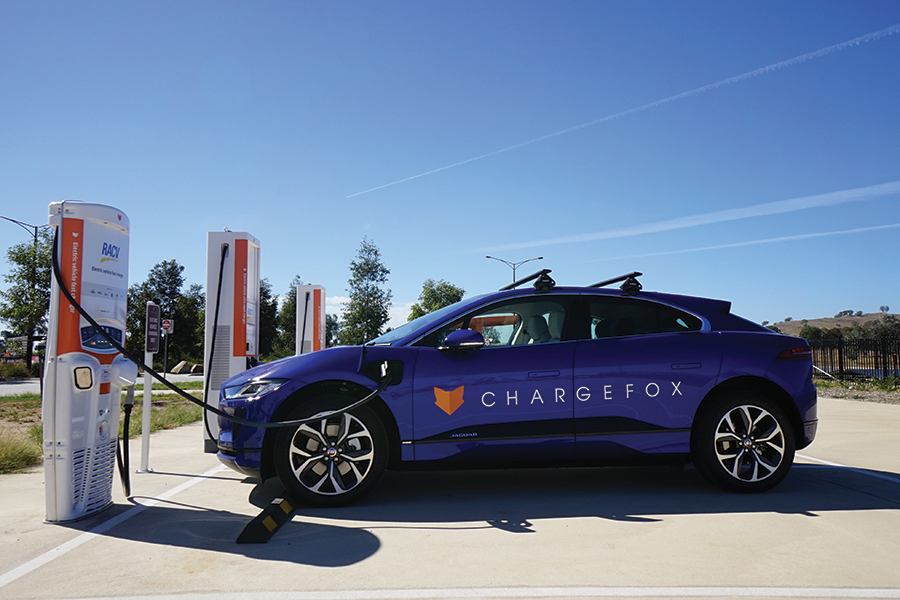In 2017, road transport accounted for about 15% of greenhouse gas emissions in Australia. It was clear that scaling the use of EVs (electric vehicles) in Australia could make a big dent in Australia’s carbon emissions and make the world a cleaner place for the next generation. Five years later, Chargefox has powered over 6m kilometres of green transport with over 300,000 charging sessions. Someone plugs into the Chargefox network every 5 minutes.
The context
Working as Cogent’s Design Principal, Matt was on the foundational product team tasked with a three-fold challenge:
- Find problem/solution and product/market fit
- Raise funds to build both the software and charging infrastructure, and
- Build a robust and scalable product suitable for different customers, including fleet managers, site hosts and EV drivers.
Understanding the customer
The success of any product and service starts with understanding the customer. Matt spent a large portion of the early days doing generative research to find and describe the key players in the burgeoning EV charging space. People who were driving the first EVs tended to be older and wealthier. And, although that demographic is usually associated with being laggards on the tech adoption curve, EV drivers were the opposites – neophiles.
Broadly, the use cases for charging fall into four different categories:
- At home, Residential
- At home/work, high-density buildings
- Destination charging (out and about)
- Fleet management and charging
At home – residential
Chargefox provides data and demand management capability for EV charging in the home. Advanced offerings are possible, with itemised billing and participation in demand management events when required. Home owners get simple, hassle free charging and the opportunity to help the grid by participating in packaged offers from their retailer
At home/work – high-density buildings
Basement car parks filled with EV chargers need optimised load balancing to ensure building electrical connections are not overloaded. Property managers also need to reconcile energy use of those chargers with tenant accounts for billing purposes.
Destination charging: Out and about
Drivers want a simple mobile interface to be able to find and use public EV charging stations. Chargefox brings an ever-growing list, making it the de facto choice for EV drivers. Site hosts install EV chargers to attract people to their businesses and support a rapidly growing EV industry. Those chargers need monitoring, management and billing capability. Chargefox brings all of those things, and makes the drivers aware of new stations.
Inter-city travel
On long road trips, drivers need to fill up their cars and get on their way quickly. Chargefox is connecting cities with ultra-rapid chargers at regular intervals, to reassure people that they won’t be stranded and can enjoy their trip.
Fleet management
Businesses provide their employees with electric vehicles. They want them to be able to charge, bill their employer, and track and understand the state and health of the fleet at any given time.
Foundational design
Visual Identity
Spinning things up from nothing is Matt’s bread and butter. After providing direction to the founder about how to go about finding a suitable name for the business and the brand in less than 30 minutes, the idea of Chargefox was born. But what’s in a name? Matt dug into his deep experience in branding and communications to explore and refine the approach to Chargefox’s visual identity. The goal? To communicate the goals and intentions of Australia’s newest EV charging network: fast, friendly, futuristic and green – Chargefox is 100% powered by renewable energy.
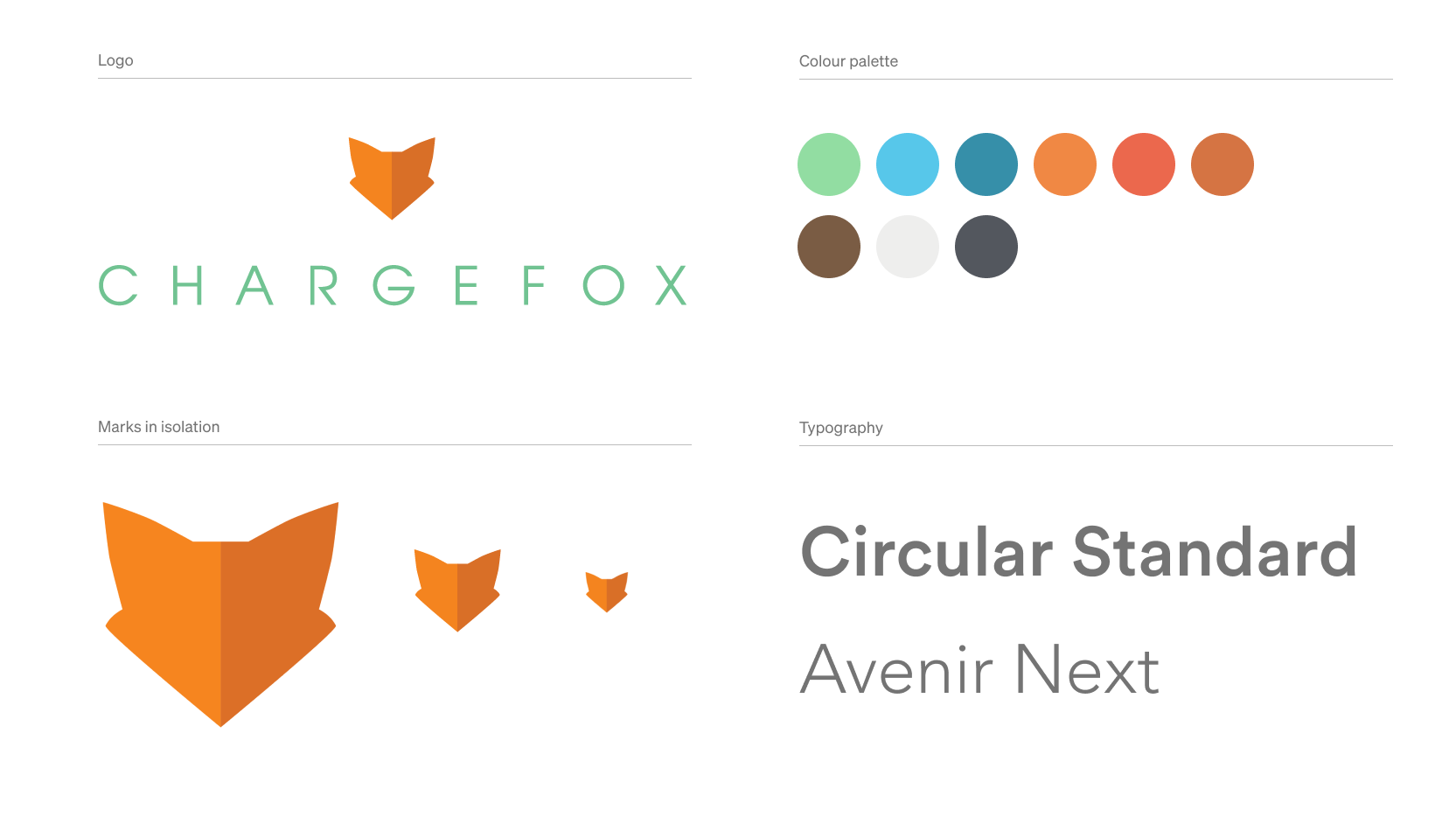
For Chargefox, a completely new product category in the Australian market, it was important to consider not only the digital applications as they’d be used within the mobile application MVP, but the end-to-end driver experience – how do we help new and existing customers identify, whilst driving, where they can park and charge their car?
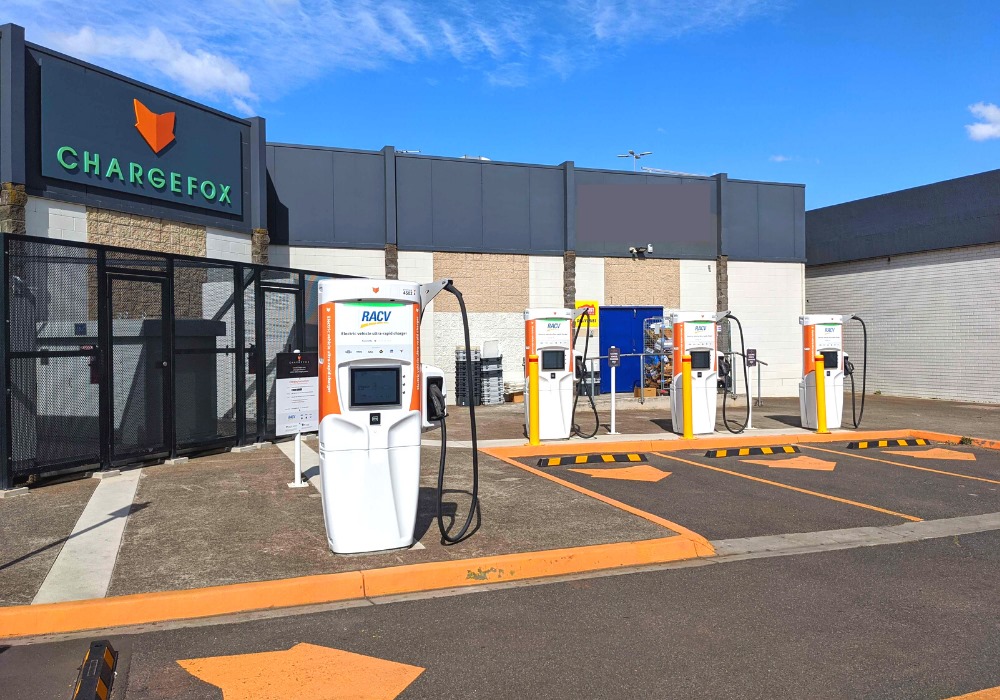
Product Design
As one of the first EV charging providers in Australia, it was up to the Chargefox team to design the experience from the ground-up. There were no Australian precedents (although plenty of European ones), and Chargefox were not a hardware supplier – rather, our job was to create a fast and reliable charging experience that was able to be adaptive to the various hardware charging solution provided by external vendors.
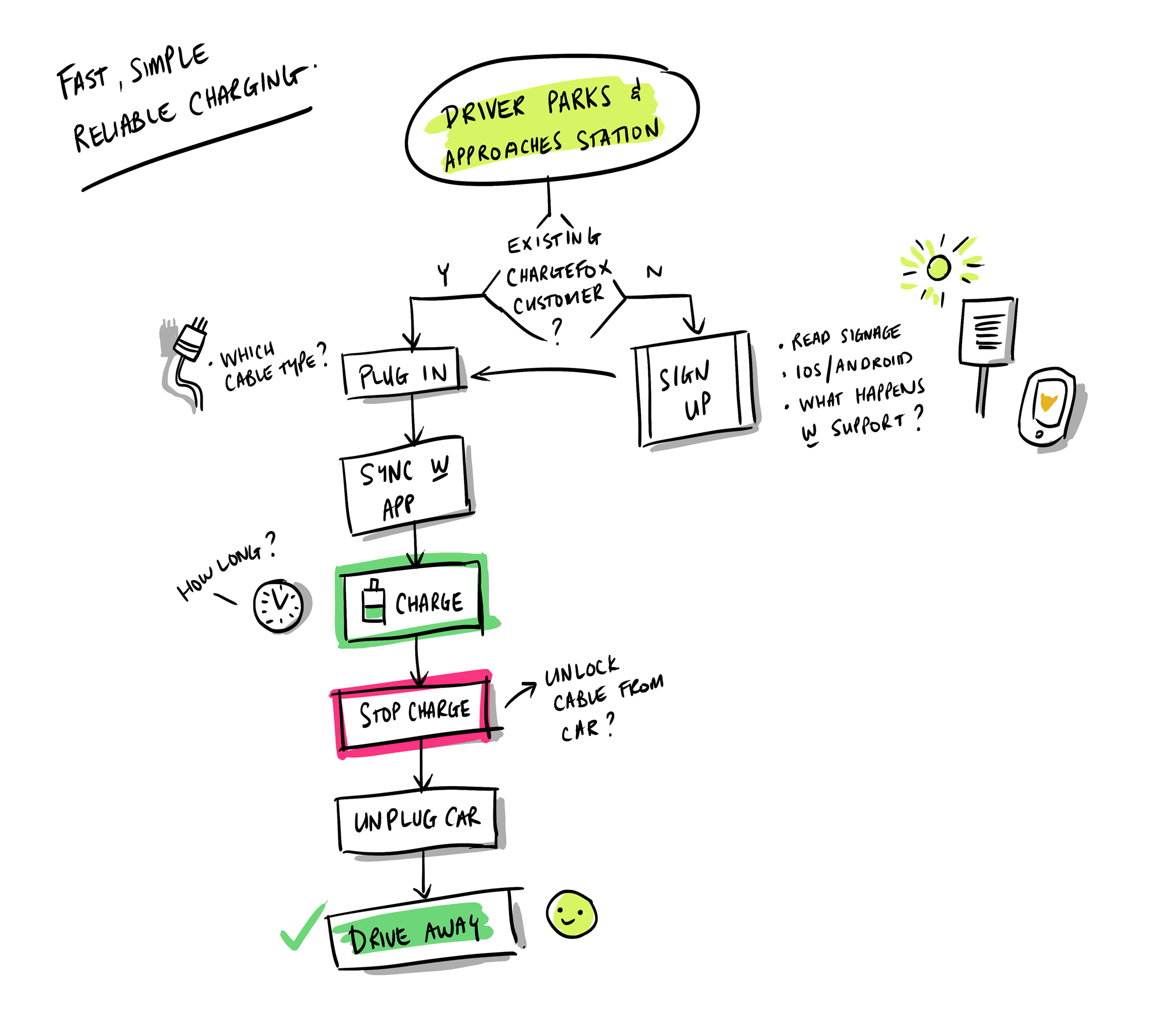
Understanding the offline and online context was important. EV drivers at the time were typically less smartphone literate, but were still engaged in new technology. Understanding outdoor factors like glare, heat, and stress all needed to be considered in building a first-version of the digital charging experience so that most early adopters had positive and referral-worthy success.
Over 6 million green kilometres have been powered by Chargefox as of 2021
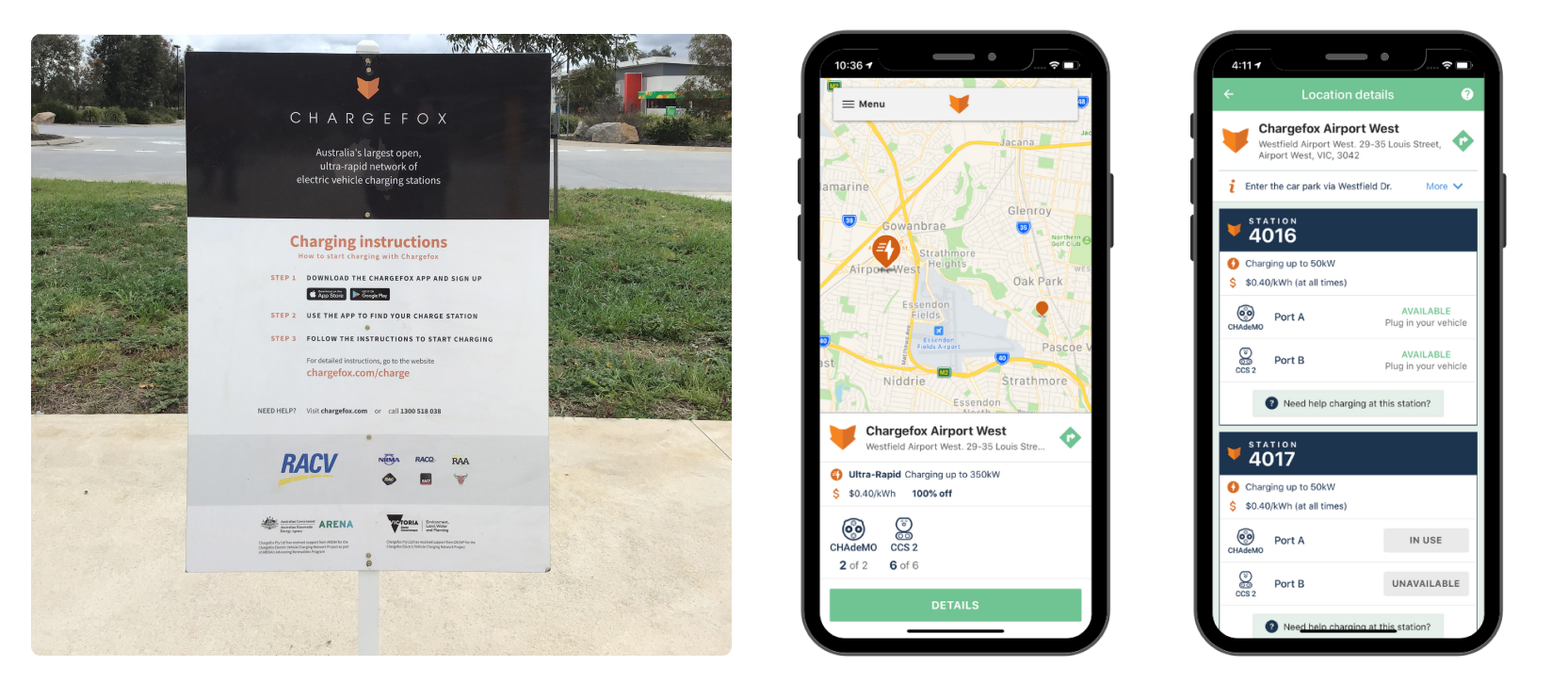
Results
Three years on, Chargefox is and remains the fast-growing and largest public EV charging network in Australia. At the time of writing (2021), Chargefox has managed more than 300,000 charging sessions and powered over 6,000,000 green kilometres. Someone plugs into the charging network every 5 minutes.
